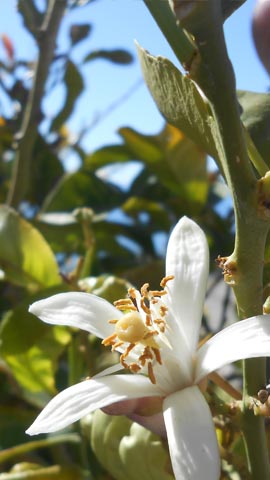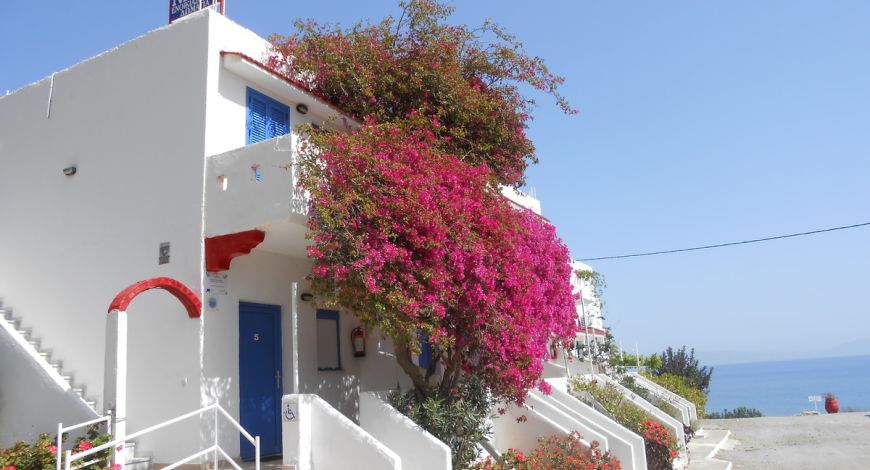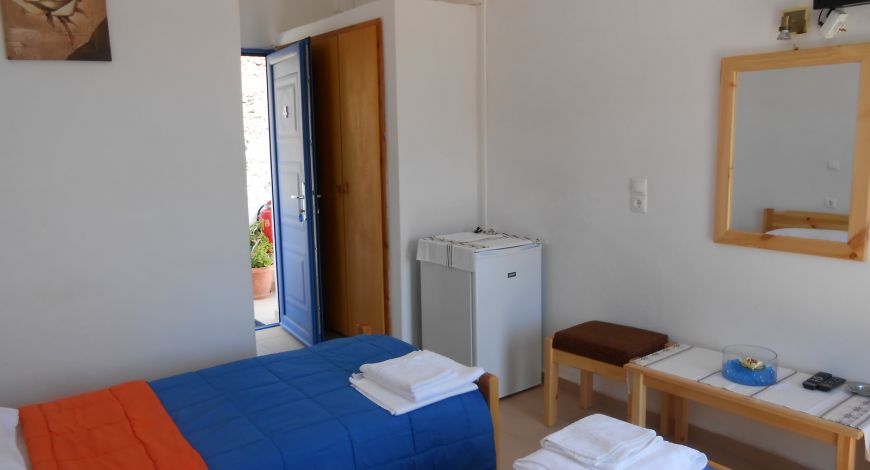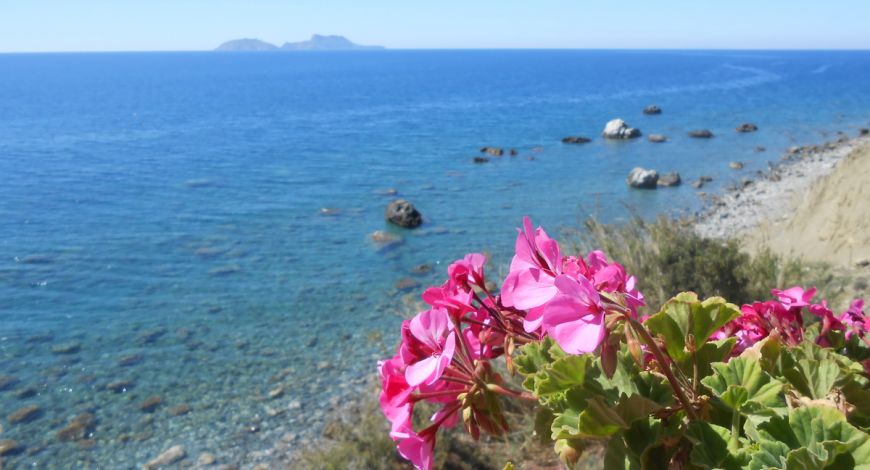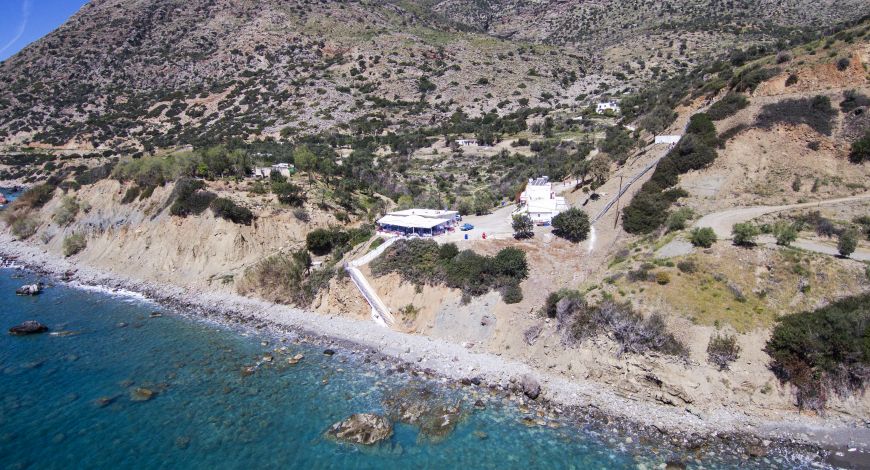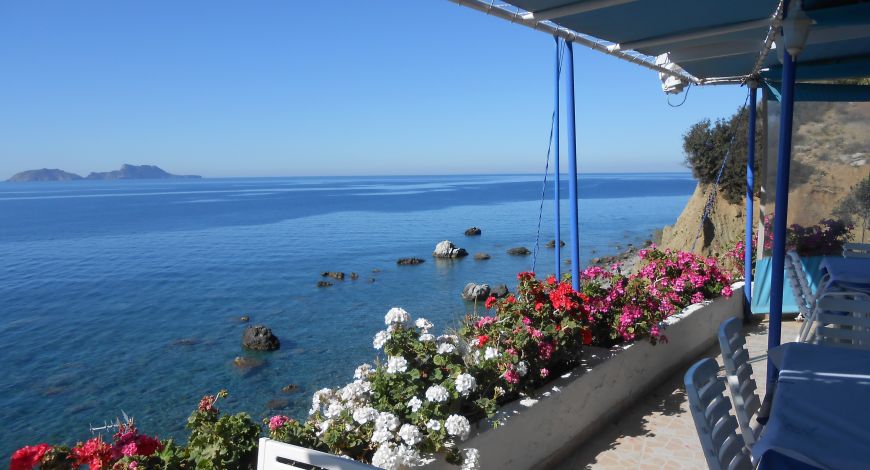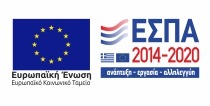-

Taverna & Rooms Nikos
Agios Georgios
Wunderbarer Blick auf das kristallklare Wasser Südkretas
-

Der ideale Ort
für erholsame Ferien!
Agios Georgios
Im südlichen Teil Kretas, außerhalb vom Dorf Agia Galini, erstreckt sich der Strand von Agios Georgios. Weg vom Lärm und Trubel zeichnet sich dieser Strand durch seinen unberührten Strand mit blauem, kristallklarem Wasser aus und bietet sich damit ideal für erholsame Ferien an.
Auf den Weg nach Agios Georgios erwarten Sie viele Fahrtrouten, die zu kleinen Klöstern und ruhigen Kieselstränden führen.
Der ideale Ort
für erholsame Ferien!
ZIMMER ZU VERMIETEN
Angenehme Zimmer am Strand.
TAVERNE
Traditionelle Köstlichkeiten mit Blick aufs Meer.
KOSTENLOSE WIFI-VERBINDUNG
WIFI steht allen Hotelräumen kostenlos zur Verfügung.
KLIMAANLAGE
Alle Zimmer sind mit Klimaanlage ausgestattet.
Nikos Place
Sehenswürdigkeiten
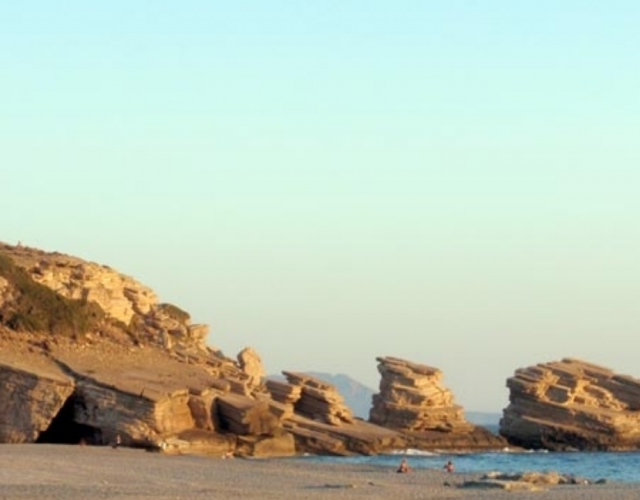
Akoumia beach
Ein großer Strand mit Kieselsteinen direkt neben dem von Triopetra. Das Wasser wird schnell tiefer. Bei Wind ist dieser Strand nicht zu empfehlen.
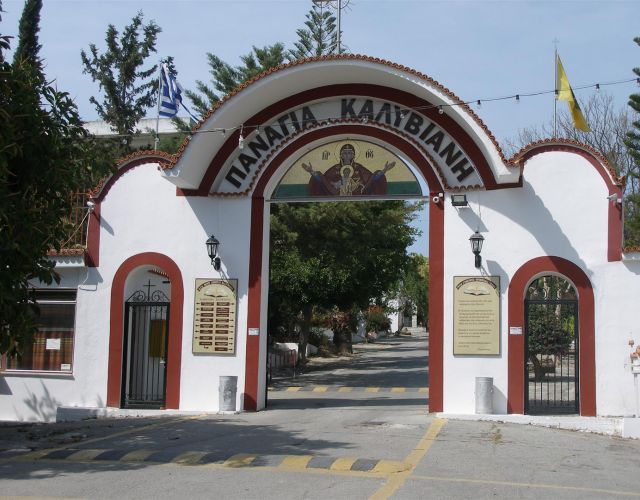
Kloster Panagia Kaliviani
Dieses schöne Kloster ist für seine soziale Arbeit bekannt. Ein Komplex von Institutionen hat sich rund um das Kloster entwickelt. Gleichzeitig sind Werkstätten für Ikonographie, Weberei und ein Museum der kirchlichen und volkstümlichen Art in Betrieb. Es gibt auch eine öffentliche Grundschule und einen Kindergarten.
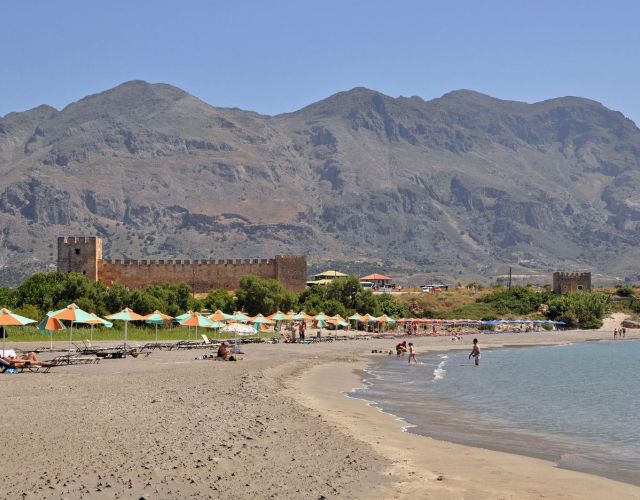
Fragokastelo Strand
Ein wunderschöner Strand direkt neben der gleichnamigen venezianischen Festung. Der Besucher kann ihn genießen wenn es nicht zu windig ist. Rund um die Festung gibt es einige Tavernen. Die Fahrt ist relativ schwierig aber sehr malerisch.
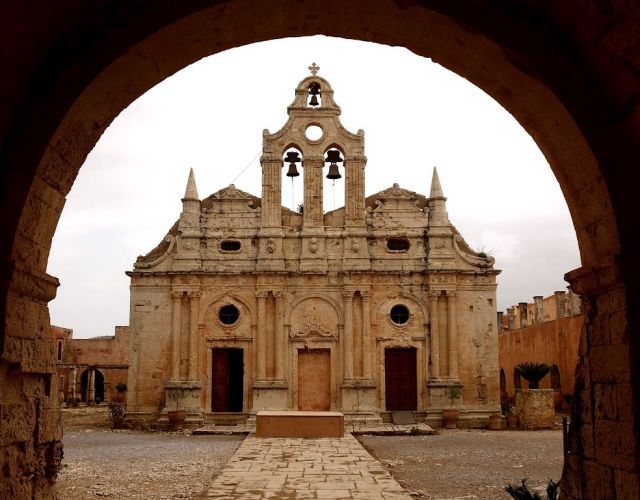
Kloster Arkadi
Ein historisches Kloster von Kreta, das bekannt ist für seinen Beitrag zum Kampf gegen die Unabhängigkeit mit dem Höhepunkt des Infernos am 08. November 1866. Im Kloster gibt es ein kleines aber wichtiges Museum über die Geschichte von Kreta.
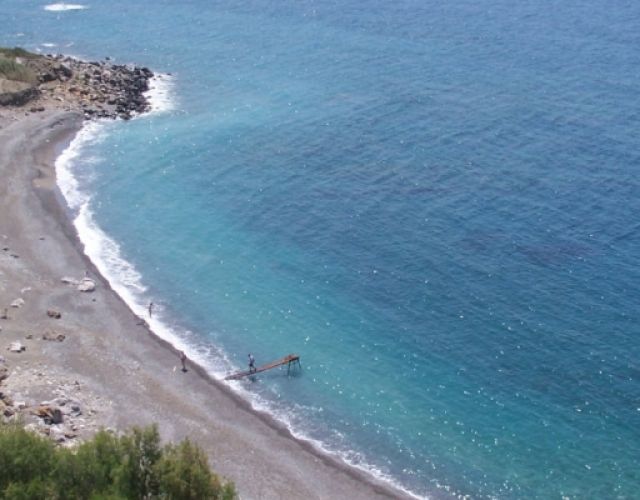
Saint Georges beach
Ein wunderschöner Strand direkt neben Agia Galini, den man mit dem Auto, mit dem Boot oder zu Fuß in etwa einer Stunde erreichen kann.
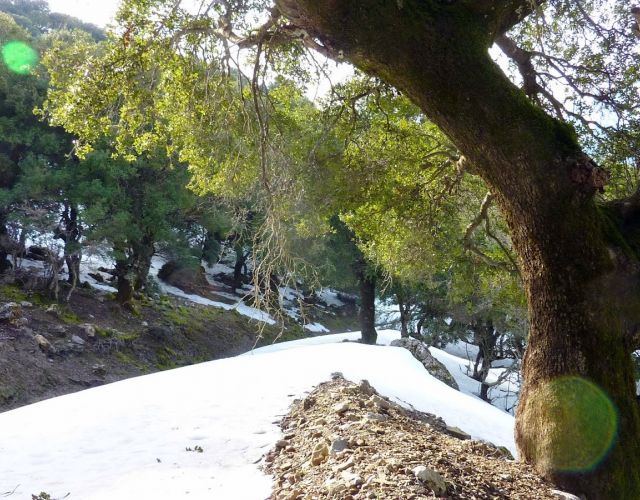
Rouva forest
The holly grove of Rouvas is located 55km south of Heraklion and 16km north of Gergeri village, in one of the most rugged and secluded parts of Crete. This isolation is the main reason for its existence, since humans have fortunately not destroyed that like all the other lost forests of Crete.
Rouvas forest develops in a small - depression - plateau at the southern part of Psiloritis mountain. One can approach the forest either from Gergeri village through the forest road, or from Nida Plateau again through a forest road or even by walking in the European hiking trail E4, starting from the Zaros lake, crossing the amazing Gorge of Agios Nikolaos and reaching the forest after 2 hours.



